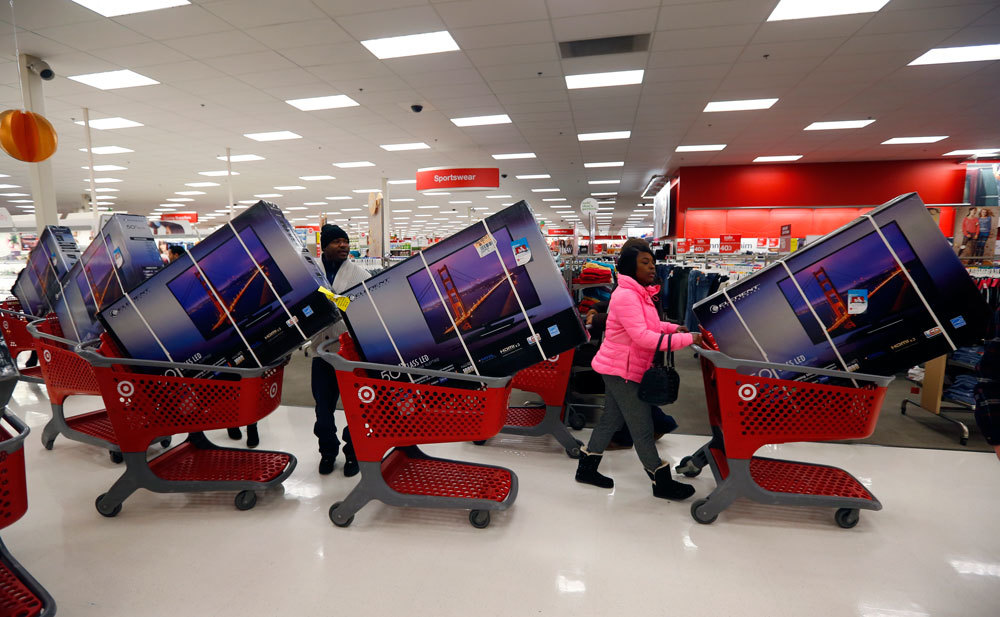Bussiness
Macy’s Expands Post-Purchase Offers To Boost Retail Media Business

Macy’s isn’t wasting any time — or revenue opportunities — when it comes to its retail media offering.
Yesterday, the retailer announced an expanded partnership with Rokt, a technology partner that allows Macy’s to deliver high-quality, non-endemic offers to its shoppers after making purchase online.
Ads and offers are displayed to a customer immediately after they check out on Macy’s website. These offers are personalized to each customer, based on both Macy’s first party data and Rokt’s partner data.
“Rokt’s unique AI-powered technology enables us to use our first-party data to provide our customers with high quality, premium offers from non-endemic advertisers post-purchase, communicating the right message at the right time, ultimately leading to increased customer engagement,” said Michael Krans, Vice President, Macy’s Media Network.
An example of a post-purchase offer shown to a Macy’s customer, powered by Rokt.
The partnership means Macy’s can source new advertising dollars with presumably minimal additional investment to its core ad tech. Rokt’s ecommerce network enables the retailer to tap into intelligence from more than 5 billion transactions across hundreds of leading businesses.
It also unlocks a whole new type of advertiser for Macy’s: non-endemic brands. While endemic ads (i.e. ads for products sold on Macy’s website) are most effective before a customer selects a product on an ecommerce site, non-endemic ads are most effective during the transaction stage, when customers are most likely to respond to new offers.
“This is the only way for non-endemic advertisers to reach Macy’s customers within the on-site environment,” says Michael Krans, VP of Macy’s Media Network.
Krans says that a number of non-endemic brands have already indicated interest, including Paramount Plus, Hulu, Vogue and premium meal kit subscriptions companies.
Protecting the customer experience
Any opportunity to grow ad revenue needs to be balanced with the customer experience. Customers have become frustrated with the number of ads shown to them when searching for products on Amazon for example. Monetizing every stage of the customer shopping journey can ultimately turn customers away.
Rokt says that its priority is to ensure that customers are met with the most relevant experience possible. “Rokt’s technology leverages intelligence powered by more than 5 billion transactions across more than 2,000 leading businesses, and every message is tailored to a shopper based on factors tied to their transaction,” says Buchanan. “That level of relevancy is why our engagement rates, which average between 5% and 15%, are much higher than the industry average.”
Buchanan adds that if a shopper has never clicked on an offer on the confirmation page, our technology will make sure they are no longer presented with offers and messages. “We take a long view on experience and believe that sometimes not presenting a customer with an offer delivers the best experience.”
Macy’s Michael Krans adds that Macy’s Media Network has seen increased customer engagement since launching the partnership with Rokt. “Since the Rokt-powered ad is served to customers post-transaction (before arriving on the order confirmation page), it does not diminish the customer shopping experience,” Krans says. “We believe our customers view these special offers as a value-add for being a loyal Macy’s customer.”
The latest in Macy’s continued investment in Retail Media
Retail media, compared to a retailer’s core business of selling physical items, is generally very profitable. With its Rokt partnership, Macy’s can unlock enterprise value through an existing asset — customer transactions that are already happening.
This latest development is part of the company’s ongoing efforts to leverage its digital platforms and customer data to create new revenue streams.
Macy’s has made a number of innovations to their media offering in the past 2 years, including launching a self-service media buying capability, shoppable display ads, upper-funnel video advertising, and a partnership with The Trade Desk.
Macy’s RMN launched in 2020, which places the retailer ahead of other department store rivals like Nordstrom, but behind mainstream giants Amazon, Walmart, and Target.
Macy’s Media Network generated $37M in revenue in the first quarter of 2024. Department store rival Nordstrom has not disclosed the ad revenue from its media network since its launch in 2021, which it clocked in at $40M for the whole year.
But that win is still dwarfed by mainstream rivals like Target, Walmart, and Amazon.
Amazon’s ad revenue in Q1 2024 was $11.8 billion. And Roundel, Target’s advertising business, brought in $1.5 billion “in value” for the company in 2023.
Boosting Macy’s core business
Compared to competitors with stronger digital roots, it’s fair to ask just how much volume Macy’s is doing online — with ecommerce sales volume and traffic a core requirement for a retail media network’s attractiveness to advertisers.
Unfortunately, the most recent digital sales figures were we have are for Macy’s fiscal year 2023, where digital sales fell 7% year over year.
But the benefits of the expanded partnership with Rokt may go beyond the ability to further monetize digital sales.
In addition to securing revenue from non-endemic brands, Macy’s is now planning to use the purchase confirmation stage to boost other internal strategic initiatives, such as Macy’s credit card enrollment and membership in its signature Star Rewards loyalty program.
Promoting its own loyalty and credit card programs may not boost the retailer’s total ad revenue numbers directly, but there’s a long term payoff in Macy’s ability to grow its first party data set through increasing participation in these programs. First party data is an asset that’s of major interest to advertisers and could be leveraged in the future as Macy’s retail media offering matures.
Digital growth has been named a top priority by new Macy’s CEO Tony Spring, who came on board in February 2024. Bolstering first party data through better adoption of credit card and loyalty programs could lay the groundwork for a better online experience for customers, as well as a compelling value proposition to future advertisers, hungry for richer customer data sets that drive more efficient media spend and reach.
The bottom line
With this expanded partnership, Macy’s is demonstrating its commitment to building out a robust retail media business that leverages its valuable first-party data and customer relationships. By tapping into post-purchase engagement opportunities with personalized, non-endemic offers, Macy’s can unlock new revenue streams without compromising the customer experience.
Critically, the retailer is taking a balanced approach – using these new monetization capabilities to also drive strategic initiatives like credit card enrollment and loyalty program growth. This holistic strategy positions Macy’s to not only boost its ad revenue in the near-term, but also strengthen its overall business by growing its first-party data assets for the long run. As retail media networks become an increasingly important part of the modern marketing landscape, Macy’s is making smart moves to establish itself as a leading player in this space.








